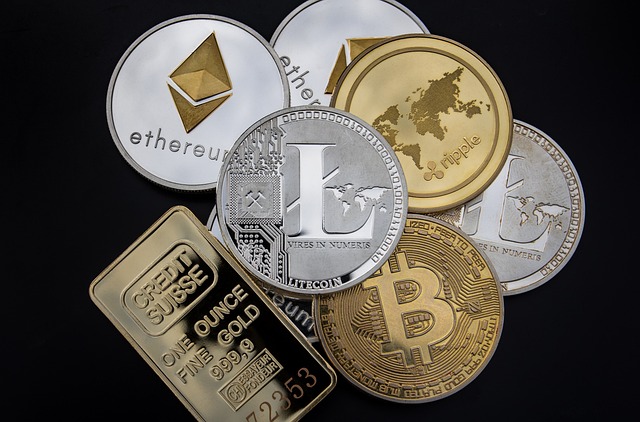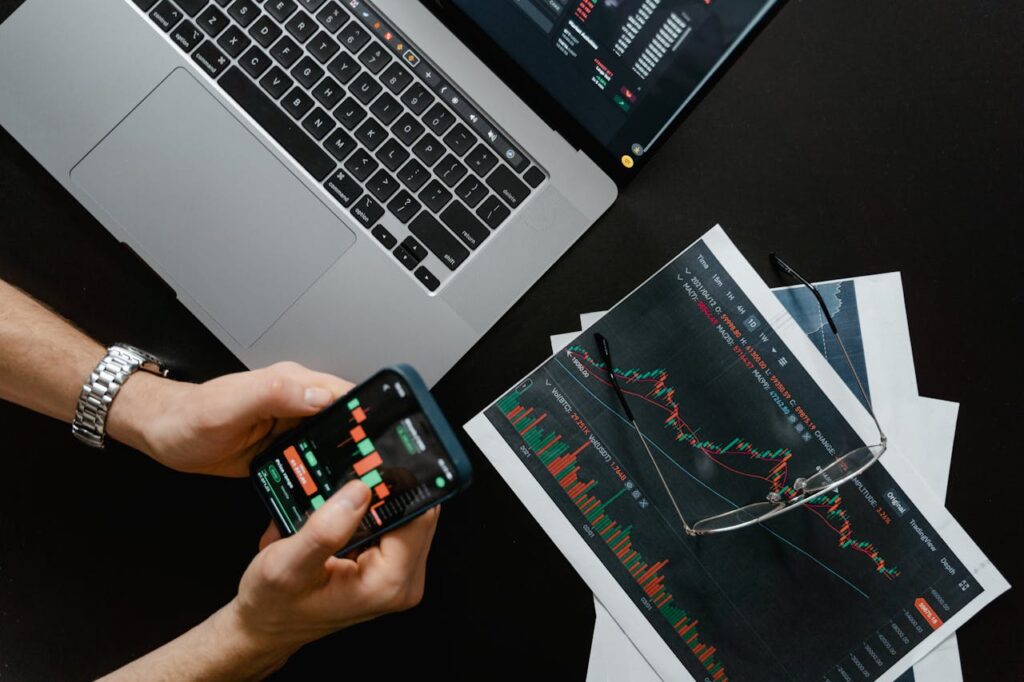Future of Blockchain in Financial Markets

Blockchain technology is making waves across industries, but its potential in the financial markets is especially transformative. With its core principles of decentralization, transparency, and security, blockchain has the ability to fundamentally reshape how financial systems operate. This article explores the impact, opportunities, and future of blockchain in financial markets.
“In the future, we will not be talking about blockchain. It will simply be the underlying technology everyone uses — like the internet today.” — Christine Lagarde
What is Blockchain?
A Simple Explanation
Blockchain is a type of distributed ledger technology (DLT) that records and verifies transactions across a decentralized network of computers. Every transaction is encrypted and stored in a block, which is linked to the previous block — creating an immutable chain of records.
This design ensures that once data is added, it cannot be altered without altering all subsequent blocks, which would require consensus from the network.
Because of its tamper-proof nature, blockchain builds trust between parties who may not know or trust each other directly.
Key Characteristics
- Decentralized Network: No central authority controls the ledger.
- Immutable Records: Once verified, transactions cannot be altered.
- Transparent System: Every participant can view the ledger.
- Secure Architecture: Uses cryptographic algorithms for transaction validation.
Why Blockchain Matters in Financial Markets
Enhanced Security and Transparency
Blockchain ensures real-time, immutable transaction verification, greatly reducing fraud. Its transparent nature allows all participants to access the same ledger, promoting trust and accountability. Cryptographic protection also safeguards data, making the system both open and secure.
Faster Transactions and Settlements
Traditional systems often involve multiple intermediaries, causing settlement delays. Blockchain enables near-instantaneous transactions, improving market liquidity.
Cost Efficiency
By removing intermediaries like clearinghouses and correspondent banks, blockchain reduces transaction fees and overhead costs, especially in cross-border payments.
Decentralization and Trust
Unlike centralized systems managed by single authorities, blockchain relies on consensus among participants. This decentralized nature increases trust and reduces the risk of systemic failures.
Real-World Applications of Blockchain in Financial Markets
Stock Trading and Settlement
Blockchain allows for real-time trade verification and settlement, reducing counterparty risks. Platforms like Nasdaq’s Linq and ASX’s CHESS replacement initiative demonstrate growing adoption.
Cryptocurrencies and Digital Assets
Bitcoin, Ethereum, and stablecoins are blockchain-based assets already disrupting traditional finance by offering borderless, decentralized transactions.
Smart Contracts
Self-executing contracts encoded on the blockchain automate workflows. For example:
- A loan contract could release funds once collateral is verified.
- An insurance claim could trigger payment once damage is confirmed via IoT data.
Cross-Border Payments
Blockchain-based platforms like RippleNet and Stellar allow banks to process global payments faster and at lower costs compared to SWIFT.
Tokenization of Assets
Blockchain can convert tangible assets (e.g., real estate, gold) into digital tokens. This enables:
- Fractional Ownership: Investors can buy a portion of a high-value asset.
- Liquidity: Assets traditionally hard to trade become more accessible.
Decentralized Finance (DeFi)
DeFi platforms offer financial services — lending, borrowing, trading — without intermediaries. Platforms like Aave and Uniswap use blockchain to provide peer-to-peer services.
Challenges Facing Blockchain Adoption in Finance
Regulatory Uncertainty
Blockchain adoption is hindered by inconsistent regulations across jurisdictions. Financial institutions must navigate this patchwork carefully.
Scalability Constraints
High transaction volumes can overwhelm blockchain networks. Solutions like:
- Layer 2 protocols
- Sharding are being implemented to improve throughput.
Cybersecurity Threats
While the blockchain itself is secure, surrounding systems (wallets, exchanges) remain vulnerable. Notable risks include:
- Smart contract bugs
- Exchange hacks
- Phishing attacks
Integration with Legacy Systems
Financial institutions rely on deeply integrated traditional systems. Adapting these for blockchain requires significant investment in both time and resources.
Future Trends Shaping Blockchain in Finance
Central Bank Digital Currencies (CBDCs)
Countries like China (Digital Yuan) and Sweden (e-Krona) are piloting blockchain-based digital currencies to:
- Enhance payment systems
- Improve financial inclusion
- Modernize monetary policies
Institutional Adoption
Major banks (e.g., JPMorgan, HSBC) are exploring blockchain for:
- KYC/AML compliance
- Trade finance
- Settlement networks (e.g., JPM Coin)
Convergence with AI and IoT
The integration of blockchain with Artificial Intelligence (AI) and Internet of Things (IoT) will:
- Automate compliance checks
- Improve fraud detection
- Secure connected devices
Sustainable Blockchain Solutions
To address environmental concerns, blockchain is evolving:
- Proof-of-Stake (PoS) reduces energy usage
- Carbon-neutral initiatives aim to balance environmental impact
Case Study: ASX’s Blockchain Shift
The Australian Securities Exchange is replacing its aging CHESS system with a blockchain-based platform. Goals include:
- Faster settlement times (T+0 or T+1)
- Reduced reconciliation errors
- Improved transparency This marks one of the largest blockchain integrations in traditional markets.
Summary Table: Blockchain Impact in Finance
| Feature | Traditional Systems | Blockchain Systems |
|---|---|---|
| Settlement Time | T+2 or T+3 | Instant or near-instant |
| Cost | High due to intermediaries | Lower due to automation |
| Transparency | Limited | Full, immutable record |
| Fraud Risk | High | Significantly lower |
| Access | Restricted | Broader and decentralized |
Frequently Asked Questions (FAQ)
Q1: What makes blockchain more secure than traditional systems?
A1: Blockchain uses advanced cryptographic techniques and decentralized consensus mechanisms, making it extremely difficult for attackers to alter transaction data.
Q2: Can blockchain completely replace banks?
A2: While blockchain can automate many banking functions, it is more likely to complement traditional banks by improving efficiency and transparency rather than replace them entirely.
Q3: How is blockchain used in trading?
A3: Blockchain enables faster and more transparent trade settlements, reduces the risk of fraud, and allows for real-time auditing of transactions.
Q4: What is the environmental impact of blockchain?
A4: Early blockchain systems (like Bitcoin) consume high energy, but newer mechanisms like Proof-of-Stake and carbon-offset programs are making blockchain more sustainable.
Q5: Is blockchain technology legal?
A5: Yes, but its legality and regulation vary by country. Some governments embrace it, while others impose restrictions. It’s important to check local regulations before engaging with blockchain-based services.
Conclusion
Blockchain is rapidly evolving from an emerging technology to a foundational pillar of the modern financial system. It offers unparalleled benefits in terms of transparency, speed, and cost-efficiency. While challenges such as regulation, scalability, and integration remain, continuous innovation and cross-sector collaboration will pave the way for mainstream adoption.
For financial institutions, investors, and governments, the choice is no longer whether to adopt blockchain — but how and when.



